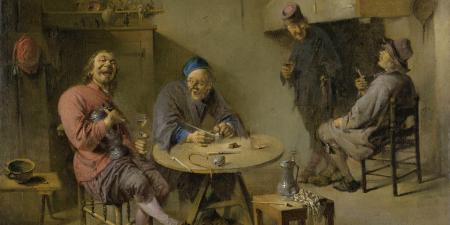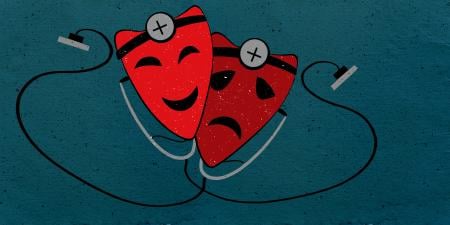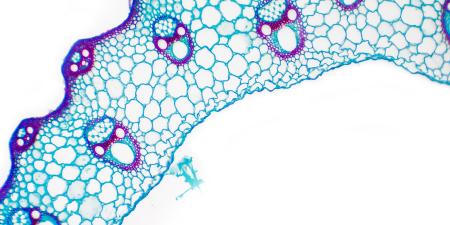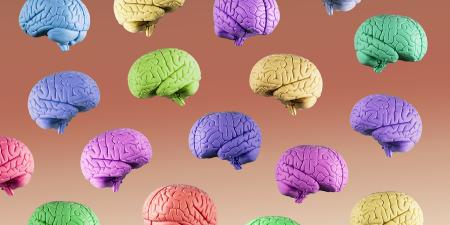Abstract
This article considers 3 reasons for derogatory humor in clinical settings and argues that when such humor is directed at patients without understanding their complex histories, it can diminish the therapeutic relationship rather than serve as a coping strategy. This article also investigates how narrative medicine can guide deeper understanding of the motivations for using humor in clinical settings, why humor is directed at a particular person or group, and why derogatory, cynical, or dark humor might be unethical and unprofessional. Colleagues and mentors are essential for guiding students’ and trainees’ professional development and for helping them cultivate coping strategies that do not cause harm.
Case
Having heard 2 fellow students, JR and CC, joking about a patient’s looks and demeanor, MK asks CC, “Don’t you think it’s unprofessional and inappropriate for JR to be making fun of a patient like that?”
“He’s just venting because the patient has been so frustrating to deal with,” responded CC. “Now that he’s got that off his chest, he’ll be less stressed the next time he sees that patient.”
“Yes, I’ve heard that line of thought before, but I don’t think you can just make jokes like that about patients without it affecting the way you interact with them.” MK continues, “Aren’t there better ways to deal with stress without making patients the butts of jokes?”
Commentary
Focusing on the ethics and professionalism of using humor in clinical settings, particularly in situations in which health care professionals and students make fun of patients, we explore possible reasons for using derogatory and cynical humor and argue that when such humor is directed at patients without understanding their complex histories and idiosyncrasies, it can not only diminish the therapeutic relationship, but also exacerbate feelings of anger, resentment, and stress among health care professionals rather than help them cope. Furthermore, we describe the importance of taking a narrative approach to better understand why such humor is being used among peers and others and to encourage deeper examination of why patient behaviors often become subjects of jokes.
Diminishing the Therapeutic Relationship With Derogatory Humor
Although certain kinds of humor can be a useful and effective coping strategy in clinical settings,1 whereby health care professionals and students can release stress or let off steam,2 recover from compassion fatigue,3 and develop better cohesion,4 directing derogatory and cynical humor at patients is unprofessional and unethical, due to its potential to harm rather than improve relationships with patients, colleagues, and others. Our working definition of derogatory and cynical humor is intentional or unintentional humor that is cruel, malicious, or disrespectful, which undermines a person’s capacity to see good in others. Wear et al state that one physician they interviewed likened distinguishing “gallows humour and derogatory humour … to ‘the difference between whistling as you go through the graveyard and kicking over the gravestones.’”5 Watson describes gallows humor, in contrast to derogatory humor, as “humor that treats serious, frightening, or painful subject matter in a light or satirical way.”6 In this case, JR appears to be using derogatory and cynical humor in a conversation with CC (although the context of the joke does matter, as will be clear on further examination).
We recommend that students such as JR develop alternative coping strategies when confronted with difficult patient encounters because the use of derogatory and cynical humor for emotional survival, even in an undeniably challenging clinical environment, is not ethically justifiable. Nonetheless, it is important to recognize that such humor exists and to understand why health care professionals and students like JR use derogatory and cynical humor before developing criteria for guidance on when it is professionally and ethically appropriate to use humor about patients when releasing stress and when it is inappropriate.
Motivations for Derogatory Humor
When a patient’s race, ethnicity, sex, personality, appearance, behavior, or circumstance is the subject of a joke, such that stereotypes and cynical attitudes are perpetuated, peers and mentors might find it difficult to see the humor or to find the humor funny, particularly when the intent is malicious or misaligned with the goals of patient care. While gallows humor might be ethically appropriate in circumstances wherein a clinical situation is cleverly poked fun at, humor maliciously directed at some attribute of a patient because of a personality conflict, nonadherence to recommended care, or some physical feature is not ethically justifiable but simply cruel and disrespectful, even if the caregiver who uses humor as a coping strategy genuinely feels helpless.
Given the recent pandemic and panic buying of toilet paper in the United States, a physician, after his patient died from COVID-19 respiratory failure, was overheard by the medical team saying, “at least there will be more toilet paper for the rest of us.” This example of gallows humor contrasts with a more personal attack on a seriously worried, overweight black female patient with flu-like symptoms. Within earshot of the patient’s family, the health care team yelled, “Code Madea,” before entering the patient’s room. These 2 words, in reference to the popular film, Diary of a Mad Black Woman (2005), poked fun at this patient’s “hysteria” or “madness” stemming from her fear of COVID-19, large stature, masculine features, and race. Given the seriousness of the illness, the fear of the general public, and the clear racial disparities in clinical settings where black patients are already hesitant to seek out medical treatment, saying “Code Madea” in the presence of a worried family is disrespectful and ethically unjustifiable, even among helpless, overburdened, or stressed health care professionals. The social cost of using derogatory humor outweighs the benefits of relief or validation for stressed, frustrated, or helpless health care professionals.
There are 3 common theories about why derogatory and cynical humor is used: the relief theory, the incongruity theory, and the superiority theory.7,8,9 In the relief theory, humor is used as a release or escape from negative or stressful situations; in the incongruity theory, humor is generated because the reality of certain situations or people do not match what is expected; and in the superiority theory, humor is used as a way to achieve power over others.7,8,9 In the case scenario, JR might not be able to cope with the stressors associated with medical training and so uses humor for relief and to be able to continue delivering patient care. This theory is also applicable to health care professionals in a pandemic who might be feeling overwhelmed by patient fears and a lack of critical resources, among other relevant stressors. Additionally, in the case scenario, the particular patient`s behavior might seem odd or abnormal to JR—that is, incongruous with what he expects. Finally, JR’s desire for acceptance or to follow his mentors’ lead could be interpreted as demonstrating his and his colleagues’ shared superiority over the patient. In our pandemic example, racial differences, body shape and size, and being vulnerable differentiate the patient from the clinician and often create a power differential in which the clinician might feel superior (eg, healthy, privileged, physically fit) and thus use derogatory jokes to establish this superiority.
The social cost of using derogatory humor outweighs the benefits of relief or validation for stressed, frustrated, or helpless health care professionals.
JR might also be learning how to cope with difficult patient encounters by modeling his mentors’ behaviors and overall cynicism in using derogatory and cynical humor.10 In a survey of medical students, it was found that physicians in power use such humor in the presence of their students, who feel as though they are expected to laugh at jokes told by those in positions of higher status or rank even when they are not funny or are offensive or cynical.10
Ethical Implications of Derogatory Humor
For health care professionals. Some students witness their mentors’ ability to detach themselves from their patients and to provide care without becoming too emotional. It would seem as though this detachment can improve patient care; negative attitudes and feelings are suppressed during patient encounters and then released in the telling of a joke, typically only among peers or colleagues. However, unless the reasons for negative attitudes and feelings are examined, the negative attitudes and feelings that are suppressed and released through humor to temporarily cope with a difficult patient encounter can lead to burnout and moral erosion (ie, loss of a moral conscience and a sensitivity to potential moral harms, such as stereotyping, that can erode our humanity), patients’ victimization, and clinicians’ lack of hope and trust in patients and others.11 Derogatory and cynical humor can further lead to the development of inherent biases among health care professionals who are no longer looking objectively at vital signs, admitting diagnoses, or laboratory values but instead focusing on patients’ “negative” characteristics, which are likely not as pertinent to treatment. We argue that the use of derogatory and cynical humor directed at patients can have a negative impact on the emotional well-being of health care professionals and students, particularly when humor is used as a quick fix to alleviate discomfort, as a way to ignore personal biases, or as a diversion from more complex problems or limitations in patient care.
For patients. If patients are within earshot of derogatory or cynical jokes directed at them, they not only might be emotionally hurt by the joke itself but also might feel betrayed by the very person telling the joke, who is expected to be compassionate and caring. What emerges is a lack of patient trust and faith, which potentially leads to nonadherence to recommended treatment and a lack of continuity of care or a patient’s refusal to seek medical help due to an overall distrust of doctors.
For relationships. Even when patients are unaware of jokes being made at their expense, derogatory or cynical humor can equally impair relationships between health care professionals and students, between students and their patients, and among student peers. When members of a student peer group, like MK in the case scenario, are unable to find humor in what is being said about a patient, the group is unable to achieve cohesion. Thus, while we do not deny that there are known benefits to the use of humor in clinical settings, the use of derogatory and cynical humor can have adverse effects regardless of whether patients are unaware of the humor.
Addressing Derogatory and Cynical Humor Through Narrative
Narrative medicine can guide a deeper understanding of the motivations for using humor in clinical settings, why humor is directed at a particular person or group, and why derogatory and cynical humor is, as we argue here, unethical and unprofessional. The narrative approach prompts us to examine each character’s story and how these stories entwine and are shared in a dialogical chorus.12
In the case scenario, the elements of the patient’s story—including medical history, relationships, values, and circumstances informing why the patient sought medical help—are all important features to uncover and understand in terms of why that patient might be “frustrating” or different in ways that prompt JR to use derogatory and cynical humor. It is equally important to understand JR’s own story, including his relationship with this patient, his past and current experiences as a medical student, issues he may be facing in his personal life, and his goals and ambitions that might explain his expressed negative feelings and use of this type of humor. What we might find is that JR has negative attitudes and biases regarding certain features of patients or that he lacks confidence in complex patient cases and therefore diffuses his discomfort through cynical and derogatory humor. Thus, he possibly needs emotional support and better coping skills. JR might also be using such humor because he previously witnessed his attending physicians or mentors, whom he deeply respects, telling derogatory and cynical jokes to cope with and detach from difficult situations. Understanding the nature of the joke and its motivations can lead to important insights about JR; if he does have certain biases, these can be addressed through further discussion, peer support, and cultivating self-awareness.
Furthermore, MK and CC can encourage JR to closely “read” the patient’s story and the nature of the difficult clinical encounter, enabling him possibly to see the patient not as someone who is necessarily difficult but as someone who is in genuine need of help and support. MK and CC, as supportive peers, can create a safe space in which JR feels comfortable disclosing his attitudes and feelings while the three of them collectively explore JR’s underlying motivations for using derogatory and cynical humor and the negative effects it might have on the entire medical team (eg, perpetuating patient stereotypes and overall cynicism). By forming a peer support group, MK and CC, as well as JR, might be more comfortable sharing their experiences, including why certain patients make them frustrated or angry or their feelings of inadequacy or powerlessness. Collectively, they might identify best practices to cope with a rigorous medical education and training program, including difficult patient encounters. Such practices might include appreciative inquiry, a collaborative methodology that focuses on (1) creating a shared vision toward change; (2) affirmation and positivity, such as seeking out positive mentors and educators; and (3) being mindful of why the patient is seeking help in the first place rather than focusing on the patient’s negative behaviors or attributes.13 This approach allows students and health care professionals to reset their frame of mind by becoming more tolerant and accepting of their patients and better able to cope with challenges in the clinical environment.13 And while humor has its place in the clinical setting, appreciative inquiry might reduce the need to target patients with cruelty and cynicism.
Recommendations
We must understand that patients rarely have the health literacy of medical professionals. Only 12% of the US adult population has been deemed to be proficient in health literacy.14 Moreover, patients might communicate poorly for various reasons. Patients are likely to become frustrated at their own situation and seeming lack of control over their own body. Patients might also find themselves fearful for various reasons, whether because of an upcoming procedure, a new diagnosis, or a projected prognosis. Whatever the reason, these feelings can manifest in patients’ anger or animosity towards their health care team. Such responses may then result in their being deemed a “difficult” or “troubling” patient. Clinicians can alleviate some stress wrought by difficult encounters with patients in more respectable ways than by turning to humor and impairing the patient-physician relationship.
Thus, the first proposed mechanism for halting the use of harmful humor in medicine is to promote awareness of the different types of humor and of humor’s benefits and burdens—specifically, the negative impact of derogatory and cynical humor on oneself and others. Time ought to be given to health care professionals and students to discuss not only issues that arise during clinical rotations, but also the acceptability of some types of humor (eg, dark humor) when kept within the confines of the health care team and the unacceptability of derogatory and cynical humor that can exacerbate stereotypes and bias, if not directly harm the subjects of such humor and their caregivers (including JRs’ peers who might be offended by such humor). Many students like JR might believe this type of humor is harmless, so we must work to promote awareness of the harmful effects of this type of humor and best practices for patient care. Also, simply being aware of one’s surroundings (ie, the clinical environment) can prevent an offensive joke hitting its target—the patient.
Second, we must ensure that students are provided with adequate role models who do not engage in derogatory and cynical jokes about patients and who use humor in more positive or less harmful ways (eg, poking fun at themselves or at a general situation) that can be beneficial as a coping strategy while enhancing relationships with patients and colleagues. These role models set the stage for how emerging health care professionals formulate their practice.
Finally, utilizing practices such as appreciative inquiry can prompt health care professionals to recognize the best attributes in people—including patients who seem to be difficult, mean, or rude—and allow them to understand “what is going well” rather than “what is going wrong.”15,16 Appreciative inquiry, along with a narrative approach to understanding the patient’s story and the student’s or health care professional’s own story, can build more positive therapeutic and collegial relationships. These alternatives can reduce if not replace the use of derogatory and cynical humor that negatively impacts emerging physicians, the health care team, patients, and their families. Such positive change needs to occur within health care settings to promote better patient care and clinician wellness.
References
- Chinery W. Alleviating stress with humour: a literature review. J Perioper Pract. 2007;17(4):172-179.
-
Pitts M, Philips K, eds. The Psychology of Health: An Introduction. London, UK: Routledge; 1998.Google Scholar 3.Wooten P. Humor
- Wooten P. Humor: an antidote for stress. Holist Nurs Pract. 1996;10(2):49-56.
-
White C, Howse E. Managing humor: when is it funny—and when is it not? Nurs Manage. 1993;24(4):80-86.
- Wear D, Aultman JM, Zarconi J, Varley JD. Derogatory and cynical humour directed towards patients: views of residents and attending doctors. Med Educ. 2009;43(1):34-41.
- Watson K. Gallows humor in medicine. Hastings Cent Rep. 2011;41(5):37-45.
-
Morreall J, ed. The Philosophy of Laughter and Humor. Albany, NY: State University of New York Press; 1987.
-
Critchley S. On Humour. New York, NY: Routledge; 2002.
- Aultman JM. When humor in the hospital is no laughing matter. J Clin Ethics. 2009;20(3):227-234.
- Wear D, Aultman JM, Varley JD, Zarconi J. Making fun of patients: medical students’ perceptions and use of derogatory and cynical humor in clinical settings. Acad Med. 2006;81(5):454-462.
-
The Policing of humour [podcast]. BBC Radio Moral Maze. https://www.bbc.co.uk/programmes/m000611c. Published June 19, 2019. Accessed April 13, 2020.
-
Bakhtin MM. The Dialogic Imagination: Four Essays. Austin, TX: University of Texas Press; 1981.
- Trajkovski S, Schmied V, Vickers M, Jackson D. Using appreciative inquiry to transform health care. Contemp Nurse. 2013;45(1):95-100.
-
US Department of Health and Human Services. America’s health literacy: why we need accessible health information. https://pdfs.semanticscholar.org/4e57/4c7b32bfc90fd9d12b27a6fef1cb7ec97681.pdf?_ga=2.151531583.765237556.1584993434-1846625173.1579631833. Accessed April 13, 2020.
- Sandars J, Murdoch-Eaton D. Appreciative inquiry in medical education. Med Teach. 2017;39(2):123-127.
-
Bushe GR. Appreciative inquiry: theory and critique. In Boje DM, Burnes B, Hassard J, eds. The Routledge Companion to Organizational Change. New York, NY: Routledge; 2012:87-103.



